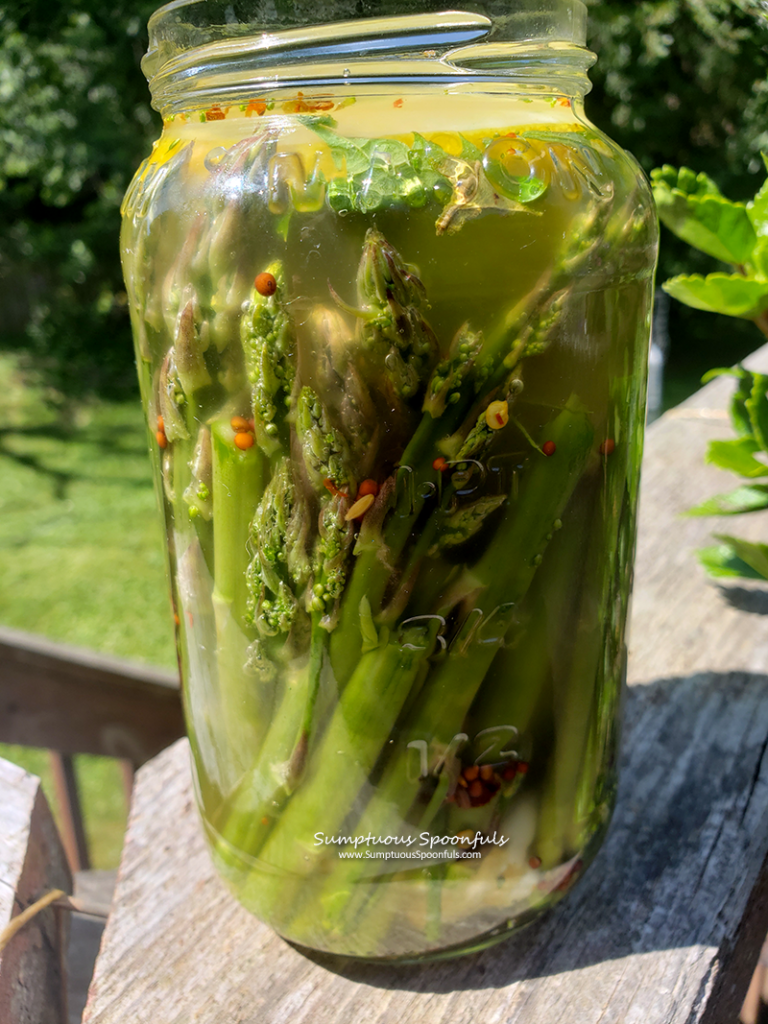Delicious, crunchy pickled asparagus that’s super easy to make! With just 3 essential ingredients, these lacto-fermented pickles are super fun to snack on. Plus they’re chock full of probiotics to keep your gut (and your whole body) healthy.
There are just three essential ingredients to make these pickles: asparagus, water and salt. But I like to add extra FLAVOR to my pickles! Preferably garlic, mustard seed, bay leaves, fresh dill, bay leaves and/or hot pepper flakes/hot peppers. Plus a slice of lemon is nice too.
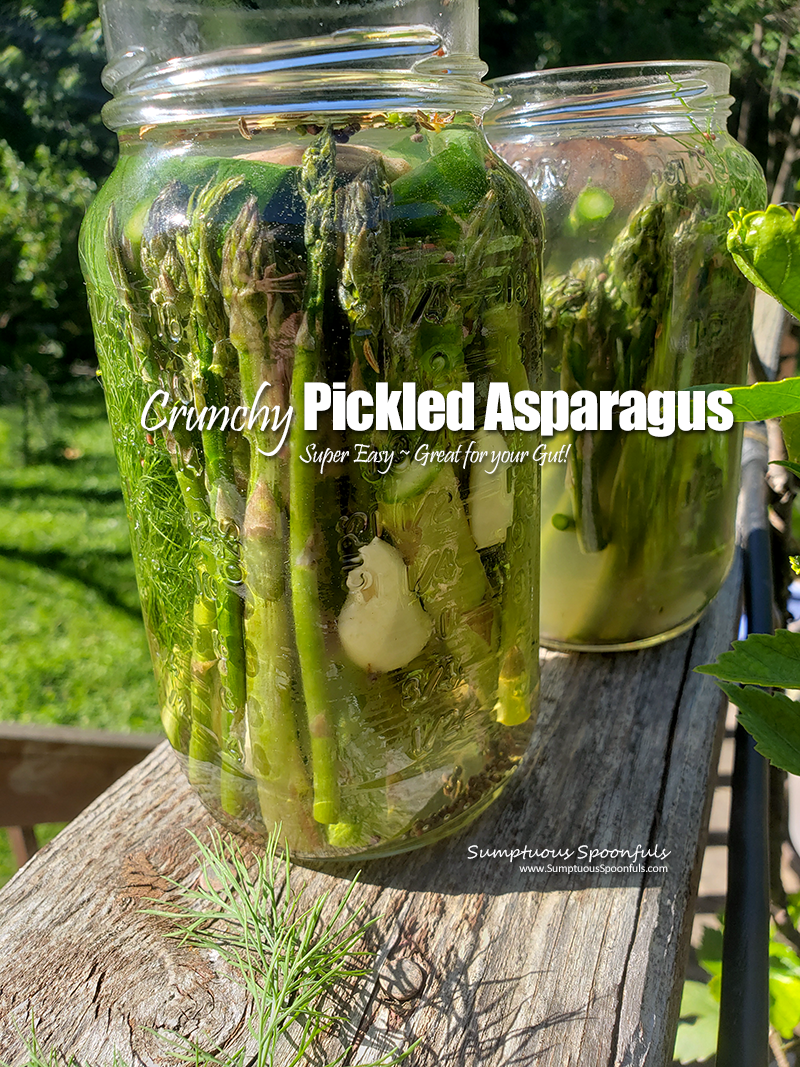
Yes, you read that right. For you pickling experts: you need no vinegar to make these pickles. Here, we’re going to make pickles the old fashioned way. Taking advantage of the natural fermentation process our ancestors used ages ago.
Do I need special canning equipment to make these asparagus pickles?
For equipment, you need almost nothing. Simply some clean, sterile glass jars. Plus some sort of clean, flat weight for keeping the asparagus from floating (there are some great ideas here!). Most pickle recipes call for canning jars. But for this recipe, you can use almost any tall jar. In fact, I re-used old pasta sauce jars that I’d run through the dishwasher. For the weight, a fresh grape leaf and a flat stone will work. I’ve chosen a few flat stones from my yard and put them through the dishwasher to fully cleanse and sterilize them. Or a slice of lemon that fits the mouth of the jar works even better.
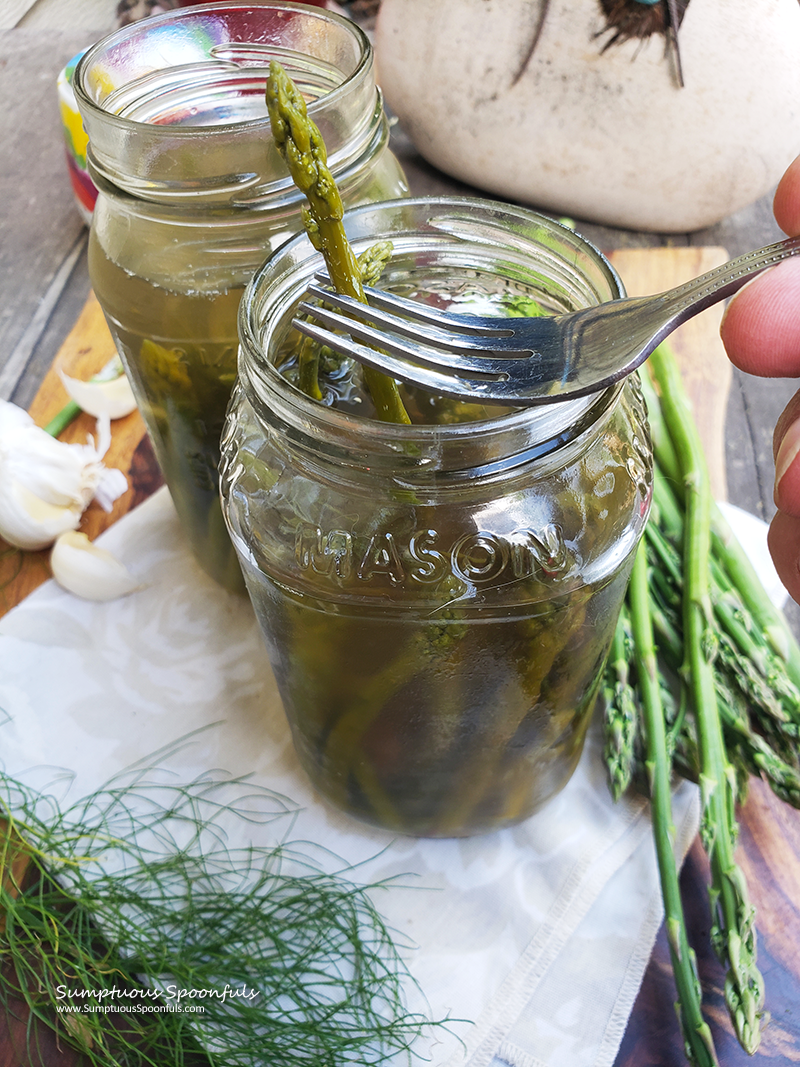
As the heat of summer starts to close in, I’m watching asparagus season slow down in my part of the world. Since the season started, I’ve been eating loads of asparagus. Eventually, though, I get tired of eating the same thing. But I know I will hunger for asparagus later. Luckily, I know that I can use fermentation to preserve my precious asparagus! Without even cutting into my summer fun time too much. Besides, when you don’t have to deal with the heat and hassle of canning, making pickles is so much fun!
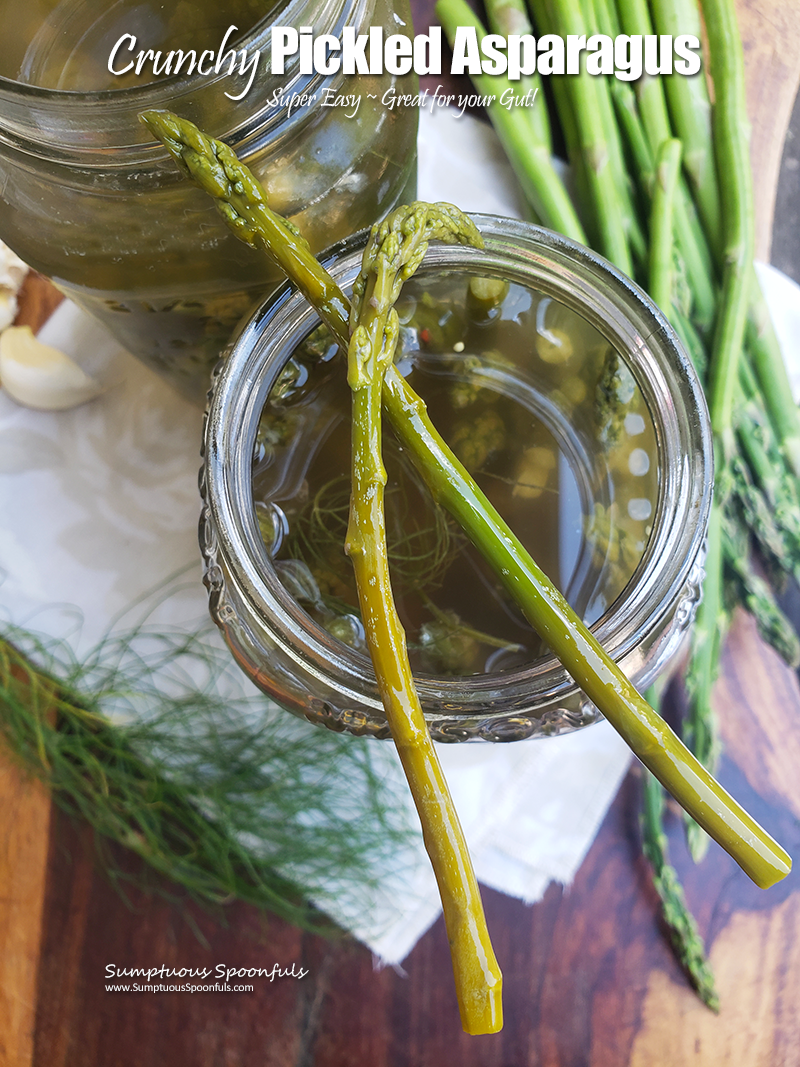
Is Pickled Asparagus with this Method Safe?
Yes! As long as you completely submerge the asparagus in the salty water, the salinity of the water keeps harmful bacteria from growing. Yet it allows the GOOD bacteria (the probiotics) to grow. So this is where the “gut health” comes into play. Probiotics feed the good bacteria in your digestive tract. So they boost your digestive system and can help you be more regular. On top of that, probiotics provide numerous health benefits throughout your body, including:
- Reducing cholesterol
- Boosting antioxidants
- Preventing cancer
- Guarding against food-borne diseases
In addition, fermented asparagus contains a large range of prebiotic compounds that can stimulate the growth of beneficial bacteria. In short, you’ll find nothing but good feelings and good health in these delightful, crunchy pickles.
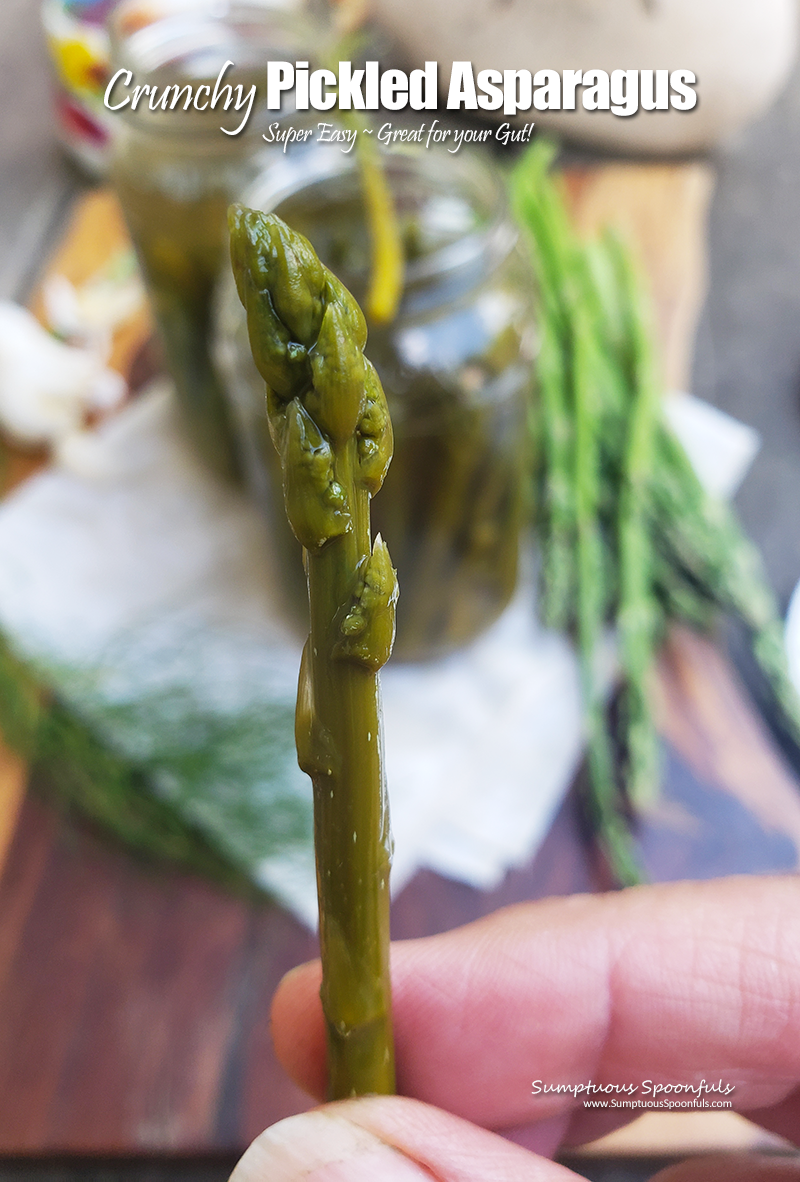
How long will these pickles keep?
You can let the pickles ferment at room temperature for a few days up to a few weeks or even more. I prefer to stop after about 3 days. But watch the pickles to see when they get good and bubbly. You’ll SEE the bubbles travelling up and down the jar. And you’ll know that the good fermentation process is happening! Also, you’ll smell it too. Fermented pickles start giving off that yummy pickle scent. Finally, you can sample the pickles to see if they are pickled like you want them.
If you decide to let them ferment longer, make sure they are properly weighed down again. The longer you let them sit at room temperature, the more sour they will get. Actually, you can let them sit at room temp for months.
Once the pickles are fermented to your liking, remove the weights, screw the lid on and store the pickles in your fridge. You can snack on these yummy pickles anytime, use them on charcuterie boards, or serve with lunch or dinner. They’re perfect for almost any occasion!
Print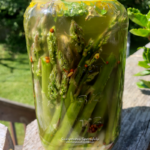
Great for your Gut! Super Easy Crunchy Pickled Asparagus
- Prep Time: 15 – 30 min
- Total Time: 15 – 30 min
- Yield: as many as you like!
Ingredients
- For each jar: fresh garlic cloves, 1 teaspoon mustard seed, fresh dill or fennel, crushed bay leaves, fennel seeds, red pepper flakes or sliced hot peppers
- Fresh, clean asparagus, ends chopped off
- Canning/pickling salt (1 – 2 Tablespoons per quart of water)
- Optional: lemon slices (for weighing down the asparagus) or other weights
Instructions
- Sterilize your jars and weights. Make sure the asparagus is nice and clean. Snip off the woody ends of the asparagus.
- In each jar, put 2 – 4 cloves of garlic and whatever additions you desire.
- Cut or break the asparagus spears and nestle them into the jar low enough that you can top them with liquid and leave a little room at the top. Pack the jar as full as you can get it. It’s okay to break the asparagus stems to get them to fit.
- Stir 1 – 2 Tablespoons canning/pickling salt into 1 quart of water until fully dissolved. Pour the salty brine over the asparagus in the jars until the asparagus is covered completely. Add leaves/weights as needed on top to keep the asparagus from floating to the top. You want all of the asparagus to stay submerged in the salty water in the fermentation stage. Set something on top to keep any bugs out like a coffee filter or plastic lid. Make sure it’s not fastened to the jar at all.
- Set the jar in a flat bowl or pie plate (to catch any liquids that might bubble over) in a dark place for at least 3 days or until you see bubbles moving in the jar and the asparagus starts to smell pickle-y. At this point, you can cover the pickles and put them in the fridge or let them ferment longer for a more sour taste.
Notes
Fermentation can bubble up and over the edge of the jar so it’s best to set the jar in a rimmed container of some sort to prevent messes.
Pickle juice is reusable! If you’ve already made a batch of fermented pickles, you can use the juice from the previous batch (which is already stocked with probitiocs) for your next batch.
RECIPE SOURCE: Sumptuous Spoonfuls – https://www.sumptuousspoonfuls.com/ … © Copyright 2022, Sumptuous Spoonfuls. All images & content are copyright protected. Please do not use my images without prior permission. If you want to publish any of my images, please ask first. If you want to republish this recipe as your own, please re-write the recipe in your own words or link back to this post for the recipe.
